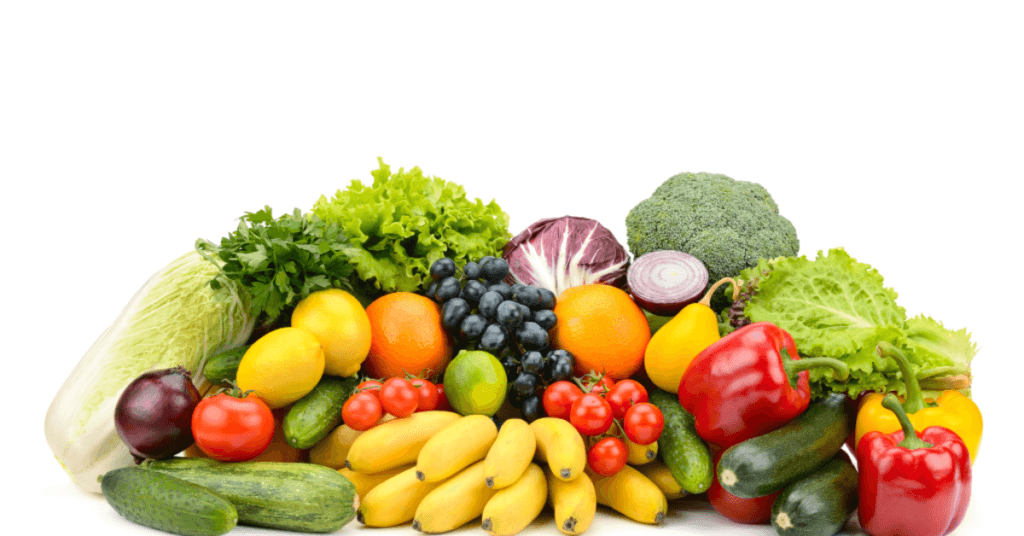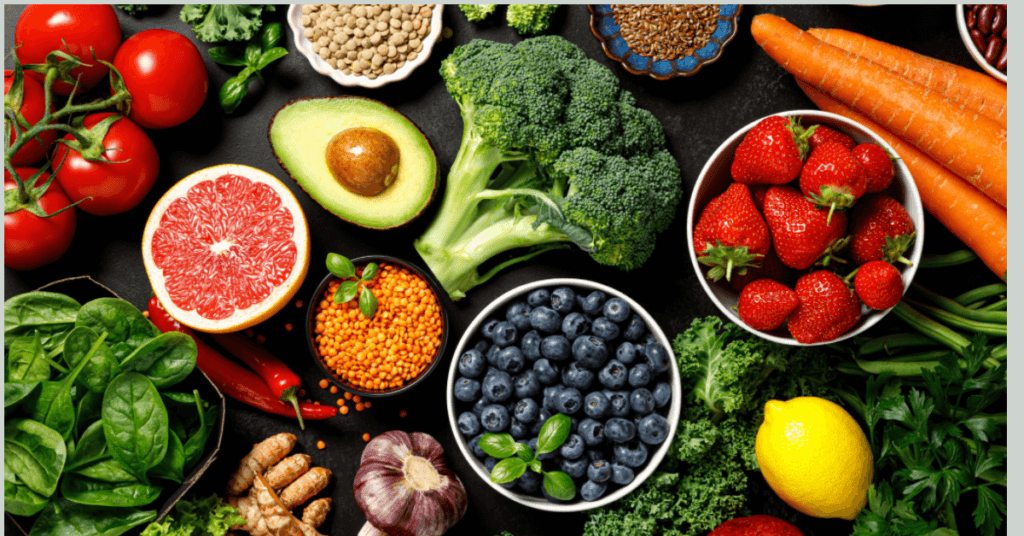
Nutrition is the study of how food affects the body. It’s an essential part of maintaining a healthy lifestyle, and it plays a crucial role in our overall well-being. Nutrients are substances in food that provide energy, promote growth and repair, and regulate body functions. Many vitamins, such as vitamin C and vitamin D, are necessary for good health and can be found in various food resources. Studies have shown that proper nutrition is also important for blood sugar regulation. Without adequate resources of nutrients, we can suffer from undernutrition or malnutrition, which can lead to serious health problems.
Vitamins, carbohydrates, protein, water, iron, sodium, and nitrates are all important nutrients that our bodies need. Carbs are a crucial source of energy for the body, while nitric oxide plays a key role in regulating blood flow. Antioxidants help protect against cellular damage caused by free radicals. Undernutrition can occur when the body doesn’t receive enough essential nutrients. Each nutrient serves a different purpose in our bodies and is required in different amounts depending on age, sex, weight and activity level.
Research studies have shown that excessive consumption of sugar and sodium can be harmful to our health. Sugar is often added to processed foods such as cookies and candy but also found naturally in fruits like bananas or apples. While sugars are an essential part of our diet for energy production by breaking down carbohydrates into glucose molecules for cells to use as fuel; too much sugar intake can lead to obesity or type 2 diabetes. Similarly, high amounts of salt intake can lead to health problems such as high blood pressure. It’s important to balance our carb intake with healthier options like sweet potatoes, which are a great source of complex carbs and fiber.
Sodium is another nutrient that we need but in moderation since it helps regulate blood pressure levels by balancing fluids throughout the body. However, too much salt intake has been linked with hypertension leading to heart disease or stroke. It is important to note that some processed foods contain nitrates, which can be harmful in large amounts. On the other hand, many vitamins found in fruits and vegetables provide numerous health benefits. It is also crucial to limit sugar intake for overall health and wellness.
Nutrition is crucial at every stage of life: from infancy through old age. Infants require specific types of nutrients such as breast milk or formula to prevent undernutrition, while adults may require many vitamins to avoid malnutrition during pregnancy or lactation periods. Additionally, maintaining digestive health is important for individuals of all ages.
Proper nutrition also plays a significant role in disease prevention and offers various health benefits; research has shown that consuming a balanced diet rich in fruits, vegetables, whole grains, lean proteins, and low-fat dairy products, along with regular physical activity, reduces the risk of chronic diseases such as heart disease, cancer, and diabetes. Additionally, a balanced diet promotes digestive health by providing many vitamins and antioxidants.
It’s important to note that not everyone has access to resources needed for proper nutrition, including many vitamins. Undernutrition occurs when individuals do not consume enough calories or nutrients necessary for their bodies’ needs, which can lead to malnutrition, stunted growth, and even cancer. Blood sugar management is also affected by poor nutrition. This is a global issue, and organizations such as the World Health Organization are working to provide resources, including bananas, to those in need.

The Basics of Healthy Eating Habits
Balanced Diet of Whole Foods
Eating a balanced diet of whole foods is the foundation of healthy eating habits. This means consuming a variety of fruits, including bananas, vegetables, whole grains, lean proteins, and healthy fats. Whole foods are a good source of antioxidants and plant compounds, which are nutrient-dense and provide our bodies with essential vitamins and minerals needed for optimal health.
Good Sources of Carbohydrates for Blood Sugar Regulation
Carbohydrates, or carbs, are often vilified in popular diets, but they play an important role in maintaining blood sugar levels and providing health benefits for heart health. Good sources of carbs include whole grains like brown rice and quinoa, legumes such as lentils and chickpeas, and fruits like berries, apples, and bananas. These types of carbs have a low glycemic index which means they release glucose into the bloodstream slowly, preventing spikes in blood sugar levels.

The Benefits of Fruits and Vegetables in Your Diet
Health Benefits
Eating fruits and vegetables provides numerous health benefits. They are a good source of many vitamins, minerals, and plant compounds that help you maintain a healthy body. By consuming these foods regularly, you can reduce the risk of chronic diseases such as heart disease, stroke, and cancer. Bananas are a great source of carbs and antioxidants, which are essential for maintaining overall health. The nutrients found in fruits and vegetables help boost your immune system, improve digestion, and support healthy skin.
Antioxidants
Antioxidants are essential compounds found in many fruits and vegetables that help protect the body from damage caused by free radicals. Free radicals are unstable molecules that can cause cellular damage leading to aging and disease. Antioxidants neutralize these harmful molecules before they cause any harm to the body. Some examples of antioxidants found in plant-based foods include vitamin C, beta-carotene, lycopene, and flavonoids. Consuming foods rich in antioxidants can also promote heart health and provide necessary carbs for energy.
Sweet Potatoes
Sweet potatoes are a great source of fiber and many essential nutrients such as vitamins A, C, B6, potassium, iron, calcium, and folate. They also contain antioxidants such as beta-carotene which helps improve eye health. Sweet potatoes have a low glycemic index which means they do not cause blood sugar levels to spike quickly after eating them like other starchy foods do. Additionally, sweet potatoes contain healthy carbs and compounds, with an average of 20-25 grams of carbs and 2-3 grams of compounds per serving.
Kidney Beans
Kidney beans are an excellent source of protein and fiber, as well as antioxidants, making them a healthy addition to any diet. They also contain several essential nutrients such as iron, magnesium, and potassium which supports muscle function. Kidney beans have been shown to lower cholesterol levels when consumed regularly over time. Additionally, they are low in carbs, with only a few grams per serving, making them a great choice for those watching their blood sugar levels.
Nutrition in Cucumber
Cucumbers, with their 96% water content, are highly hydrating and also rich in vitamin K for bone health and vitamin C as an antioxidant to protect cells from damage. Additionally, cucumbers are low in carbs, containing only a few grams per serving, which makes them a great choice for those watching their blood sugar levels.
Nutrition in Lettuce
Lettuce is a leafy green vegetable that is low in calories and high in water content. It also contains several essential vitamins and minerals such as vitamin A, C, K, folate, potassium. Lettuce is also a good source of fiber which helps improve digestion. Additionally, it is low in carbs and sugar while being rich in antioxidants which are beneficial for heart health.
Nutrition in Celery
Celery is a crunchy vegetable that provides several important nutrients like vitamin K which supports bone health along with potassium and magnesium which help regulate blood pressure. Celery is also rich in antioxidants like flavonoids that can help reduce inflammation. Plus, it is low in carbs and sugar, containing only a few grams per serving.
Side Effects of Herbalife Nutrition
Herbalife nutrition products have been associated with several side effects including liver damage, digestive problems, dehydration, and electrolyte imbalances. Some people may experience allergic reactions to the ingredients used in these products leading to skin rashes or difficulty breathing. It’s important to consult with your healthcare provider before using any herbal supplements or weight loss products to ensure they are safe for you to use. Additionally, some Herbalife products contain high levels of sugar and carbs, while others are rich in antioxidants. Be sure to check the label and monitor your intake of grams of sugar and carbs to maintain a healthy diet.

Tips for Creating Balanced Meals with The Healthy Eating Plate
Using the Healthy Eating Plate as a Guide for Balanced Meals
Eating a balanced diet is essential to maintaining good health. The Harvard School of Public Health created the Healthy Eating Plate, which is an excellent guide for creating balanced meals. It emphasizes the importance of including fruits and vegetables, whole grains, lean proteins, healthy fats, and carbs in your diet.
Aim for Half Your Plate to be Filled with Fruits and Vegetables
Fruits and vegetables are packed with vitamins, minerals, fiber, and antioxidants that help protect against chronic diseases such as heart disease and cancer. Aim for half of your plate to be filled with colorful fruits and vegetables at every meal. Try to choose a variety of different colors such as red bell peppers, green spinach, yellow squash, purple eggplant, and orange sweet potatoes. Additionally, they are low in carbs which makes them a great choice for those watching their carbohydrate intake.
Choose Whole Grains Over Refined Grains for Better Nutrition
Whole grains are unprocessed grains that contain all parts of the grain kernel: the bran, germ, and endosperm. They are rich in fiber, vitamins B and E, minerals like iron and zinc – all of which contribute to heart health. On the other hand, refined grains have been stripped off their nutritious parts during processing leaving only endosperm behind which has less nutrients than whole grain version and may not be as beneficial for heart health.
Pay Attention to Portion Sizes by Measuring Food in Gram Servings
Portion control is critical for maintaining heart health when it comes to achieving a balanced diet. One way to ensure you’re eating appropriate portions is by measuring food in gram servings using a food scale or measuring cups/spoons. For example:
- 1 serving of cooked rice (brown or white) = 150g, a great addition to your heart health diet.
- 1 serving of cooked pasta = 75g
- 1 serving of meat for heart health = about the size of a deck of cards (90g)
How to Read Nutrition Labels?
Reading nutrition labels can help you make informed decisions about what you eat, especially when it comes to heart health. Here’s how to read them:
- Start with serving size: All the information on a nutrition label is based on one serving size, so make sure you know how much that is.
- Check calories: Look at the total number of calories per serving and compare it to your daily calorie needs.
- Limit certain nutrients: Choose foods with low amounts of saturated fat, trans fat, sodium, and added sugars.
- Get enough of essential nutrients: Make sure you’re getting enough fiber, vitamins A and C, calcium, and iron.
How to Use Herbalife Nutrition?
Herbalife Nutrition offers a range of products to help people achieve their health goals. The company provides high-quality supplements for weight management, energy and fitness, digestive health and immune support. To use Herbalife nutrition:
- Determine your goals: Decide what you want to achieve – whether it’s losing weight or building muscle – then choose the appropriate product(s).
- Follow instructions carefully: Each product comes with specific instructions on how to use it for maximum effectiveness.
- Consult with a coach or expert: Herbalife has coaches who can provide guidance on how best to use their products for optimal results.

Encouraging Nutritious Habits in Children with Kid’s Healthy Eating Plate
USDA’s Kid’s Healthy Eating Plate is a useful tool for encouraging healthy eating habits in children. It provides an easy-to-understand visual representation of what a balanced meal should look like, making it easier for children to understand the importance of wholesome nutrition. The plate is divided into four sections: fruits, vegetables, grains, and protein foods. Each section represents the recommended portion sizes of each food group that should be included in every meal.
Adults in high-income countries can use the Kid’s Healthy Eating Plate to teach children about balanced nutrition. The plate serves as a guide to help parents and caregivers plan nutritious meals for their children. Using this tool can help ensure that children are getting all the essential nutrients they need to grow and develop properly. It helps instill healthy eating habits early on, which can lead to a lifetime of good health.
The Kid’s Healthy Eating Plate can also be adapted for use in low-income countries to promote healthy eating habits among children. While some families in these countries may not have access to all the recommended food groups, they can still use the plate as a guide to make sure that their meals are as balanced as possible given their resources. For example, if fresh fruits and vegetables are not readily available or affordable, families can focus on incorporating more whole grains and protein-rich foods into their diets.
Superfoods for Heart Health and Digestion: Oats and Avocado
Oats and avocado are two superfoods that can greatly benefit your heart health and digestive health. Incorporating these foods into your diet may help reduce the risk of heart disease, lower cholesterol levels, regulate blood pressure, and promote healthy digestion.
Soluble Fiber in Oats for Heart Health
Oats are a great source of soluble fiber, which is beneficial for reducing cholesterol levels in the body. Soluble fiber binds to cholesterol in the digestive tract and helps remove it from the body before it has a chance to be absorbed into the bloodstream. By lowering cholesterol levels, oats can help reduce the risk of heart disease.
In addition to its cholesterol-lowering benefits, oat fiber also promotes digestive health by regulating bowel movements and preventing constipation. This is because soluble fiber absorbs water as it moves through the digestive tract, adding bulk to stools and making them easier to pass.
Healthy Fats in Avocado for Heart Health
Avocado is high in healthy fats that can benefit heart health by helping to lower bad (LDL) cholesterol levels. These fats include monounsaturated fatty acids (MUFAs) and polyunsaturated fatty acids (PUFAs), which have been shown to help improve blood lipid profiles when consumed as part of a healthy diet.
Potassium in Avocado for Heart Health
Avocado is also a good source of potassium, an essential mineral that plays a key role in regulating blood pressure. Potassium helps counteract the effects of sodium on blood pressure by relaxing blood vessel walls and increasing urine output. By incorporating avocado into your diet, you may be able to reduce your risk of developing high blood pressure or other cardiovascular diseases.
How to Incorporate Oats and Avocado Into Your Diet
There are many ways to incorporate oats and avocado into your daily meals and snacks. Here are some ideas:
- Add rolled oats or steel-cut oats to your breakfast routine by making oatmeal with milk or water.
- Use oats as a healthy substitute for breadcrumbs in meatballs or meatloaf.
- Make overnight oats by soaking rolled oats in milk or yogurt overnight and topping with fruit and nuts in the morning.
- Add avocado to your salads, sandwiches, or wraps for a creamy texture and added nutrition.
- Mash avocado onto toast and top with eggs, tomatoes, or other veggies for a delicious breakfast or snack.

Improving Brain Function with Blueberries and Broccoli
Blueberries and Broccoli: The Brain-Boosting Power Duo
Blueberries and broccoli are two superfoods that have been found to improve brain function in various ways. Both are rich in compounds that can help enhance memory, cognitive function, and overall brain health. In this section, we’ll explore the benefits of blueberries and broccoli for the brain, as well as some other foods that can support brain health.
Flavonoids in Blueberries Boost Memory and Cognitive Function
Blueberries are packed with antioxidants called flavonoids, which have been shown to improve memory and cognitive function. Flavonoids work by reducing inflammation in the brain, protecting neurons from damage, and improving communication between brain cells.
One specific type of flavonoid found in blueberries is anthocyanins. According to a study published in the Journal of Agricultural and Food Chemistry, consuming blueberry juice regularly for 12 weeks was associated with improved memory function in older adults. Another study found that drinking wild blueberry juice for 12 weeks improved cognitive performance in children aged 7-10 years old.
In addition to anthocyanins, blueberries also contain compounds that can increase blood flow to the brain. One such compound is nitric oxide (NO), which helps dilate blood vessels and improve circulation. A study published in the journal Nutrients found that consuming a blueberry drink high in NO increased blood flow to the brain’s prefrontal cortex region, which is responsible for executive functions like decision-making and working memory.
Broccoli Provides Choline for Brain Development
Broccoli is another superfood that has been linked to better brain health. This cruciferous vegetable is a good source of choline, a nutrient that plays an important role in brain development and function.
Choline is a precursor to acetylcholine, a neurotransmitter involved in learning and memory. Studies have shown that low levels of choline during pregnancy and early childhood can lead to cognitive deficits later in life. In fact, the American Medical Association recommends that pregnant women get at least 450 mg of choline per day to support fetal brain development.
In addition to choline, broccoli also contains other nutrients that are important for brain health, such as vitamin K and folate. Vitamin K has been shown to improve cognitive function in older adults, while folate is essential for proper brain development and function.
Bananas: Another Brain-Boosting Food
While blueberries and broccoli are two of the best foods for brain health, there are many other foods that can support cognitive function. One such food is bananas. Bananas are a good source of choline, just like broccoli. They also contain vitamin C, which has been linked to better cognitive performance in older adults.
In addition to choline and vitamin C, bananas also contain other nutrients that support brain health, such as potassium and magnesium. Potassium helps regulate blood pressure and improve blood flow to the brain, while magnesium is important for nerve function and mood regulation.

Embracing a Nutritious Lifestyle for Optimal Health
With the abundance of information available on nutrition, it can be overwhelming to know where to begin. However, adopting healthy eating habits is not as complicated as it may seem. By incorporating nutrient-dense foods into your diet and creating balanced meals, you can reap the benefits of a nutritious lifestyle.
Fruits and vegetables are essential components of a healthy diet. They are packed with vitamins, minerals, and fiber that promote optimal health. The Healthy Eating Plate is an excellent tool for creating balanced meals that prioritize these foods while also including whole grains, lean proteins, and healthy fats.
Encouraging children to develop nutritious habits early in life sets them up for success in the long run. The Kid’s Healthy Eating Plate provides a visual guide that makes meal planning fun and interactive for kids.
Adding superfoods like oats and avocado to your diet can improve heart health and aid in digestion. These foods are easy to incorporate into your daily routine and offer numerous health benefits.
Blueberries and broccoli are two more superfoods that have been shown to improve brain function. Incorporating these foods into your diet can boost cognitive performance while also providing essential nutrients.
By embracing a nutritious lifestyle, you can enhance your overall well-being while reducing the risk of chronic diseases such as diabetes, heart disease, and cancer. It’s never too late to start making positive changes in your dietary habits.
Incorporating various writing styles such as persuasive techniques can help motivate you towards healthier choices while using descriptive language helps paint a vivid picture of how delicious these nutrient-dense foods truly are! Varying sentence structures keeps readers engaged throughout the article while incorporating slang or colloquial language creates an approachable tone that appeals to all audiences.
Remember that adopting healthy eating habits is not about deprivation or restriction but rather about nourishing your body with wholesome foods that provide essential nutrients. So why not start today? By taking small steps towards a nutritious lifestyle, you can achieve optimal health and well-being.




